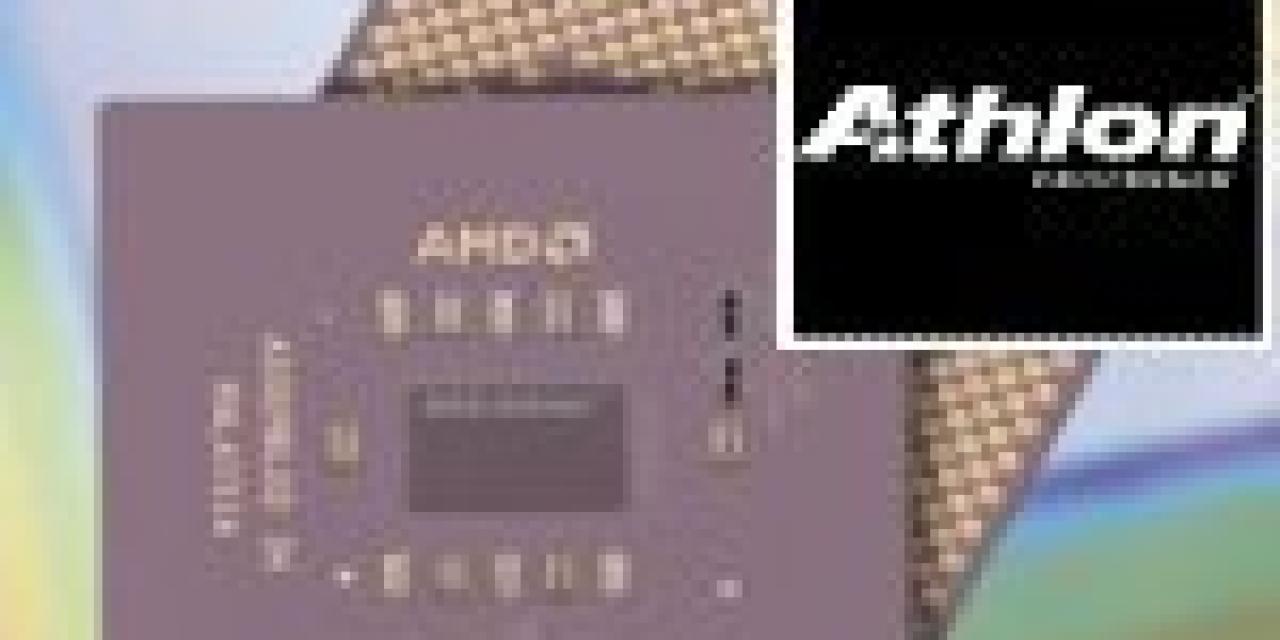
At the start of every year Chipanalyst announces the best processors for the year just gone. This year has produced some mixed blessings for the two leaders of the field.
AMD has won, for the second year in a row the coveted best PC Processor of the year. So desktop glory goes to AMD but Intel foughT back with a Best Mobile processor awars for the Mobile Pentium III processor (with SpeedStep technology).
The Sun UltraSparc III won the Best Workstation/Server Processor Award.
So follow the links below to find out how the giants faired last year, in the unforgiving processor market.
The biggest story of 2000 has to be the passing of the 1GHz barrier by AMD's Athlon on March 6. AMD and Intel had been maneuvering for the finish line, but AMD crossed it first-by two days. Although cracking 1GHz first may have been the highlight of AMD's year (aside from winning the MDR Best PC Processor of 1999 award) as well, AMD also had its best financial year in recent memory and introduced two Athlon derivatives: Thunderbird and Spitfire.
AMD boosted the performance of Athlon with a chip set (760) that supported DDR SDRAM, and it also increased the Athlon front-side bus from 200MHz to 266MHz. At Microprocessor Forum 2000, AMD also demonstrated a dual-processor version of the chip set (760MP), which should ship in systems in 2Q01. For Intel, the year started a bit shakily, after the 820/MTH debacle of 1999, with a shortage of 0.18-micron Coppermine-based Pentium IIIs. Intel faltered with the introduction of the 1.13GHz Pentium III, which had to be recalled after only a month. It continued with the delay and final cancellation of Timna.
The 1.5GHz Pentium 4 was finally launched on November 20 to mixed reviews. The penalty of hyper-pipelining appears to outweigh the architectural improvements. SSE2-optimized applications and benchmarks, however, show promise for the future.
In January, AMD had Gateway rejoin the ranks of its OEMs with a SelectPC featuring a 600MHz Athlon. And in the value PC segment, AMD hit the final K6-2 speed grade on February 22. A few months later, AMD launched its value processor successor, Duron, based on the Athlon core but with a smaller L2 cache. While Intel was offering Celeron at 600MHz, the first Durons were being offered at 600, 650, and 700MHz. Keeping well ahead of Intel and Celeron, AMD launched Duron 750MHz in September and 800MHz in October.
VIA struggled in 2000 to fit the pieces together on a processor strategy, first launching the Cyrix III with a Cyrix-designed processor, which failed to materialize. VIA then relaunched the Cyrix III name with a Centaur-based design. VIA has solidified a strategy based on Centaur designs and plans to ship about 10 million processors this year.
As the first processor to reach the 1GHz milestone, and on the basis of continuous and consistent improvements made over the year in performance (on-chip L2 cache, 1.1 and 1.2GHz clock rates) and system design (760 chip set with DDR memory), AMD's Athlon is, in our estimation, the Best PC Processor of 2000.
Although each processor vendor introduced new power-management technology to the market in 2000, the splashiest recent announcement took place in January 2000, when ultrasecretive Transmeta revealed the fruits of four years of development-the Crusoe processor for mobile computers and Internet appliances. Transmeta has developed a unique x86 processor that isn't really an x86; it's a VLIW (very long instruction word) processor that uses "code-morphing" software to emulate x86 code. Emulation of x86 instructions had occurred before, but Transmeta attempted the breakthrough of making intelligent decisions on machine code sequences in order to maximize performance while minimizing power by determining the appropriate amount of processing (i.e., clock speed) to apply to the processing task. That intelligence, along with a core that can scale in both voltage and frequency, is the basis for its LongRun power management. It is unfortunate that Transmeta has chosen to over-promise on the performance of code-morphing, because the only application we have seen that benefits from this technology is DVD movie playback. For most productivity applications, code-morphing produces embarrassingly poor benchmark performance.
Intel introduced the first power/battery management technology in 2000 with its SpeedStep technology. Intel introduced new processors into the mobile market throughout 2000; by the second half it dominated all segments, with the conspicuous exception of the ultraportables addressed by Transmeta. Intel revealed plans to address that segment with a sub-1V Pentium III that will ship early this year. During 2000, unlike its performance in the desktop market, Intel was in top form in mobile.
AMD's K6-2+ with PowerNow and VIA's Cyrix III with LongHaul both deserve consideration, because both offer power management in value segment processors and aren't reserved for performance processors. AMD's 0.25-micron K6-2 processor was a major force in the value mobile market segment at the beginning of 2000 until the microarchitecture ran out of clock speed headroom at 550MHz. The second half of the year was dominated by Intel's mobile processors, and AMD's K6-2+ lost market share. We expect a resurgence of PowerNow in 1H01 with new mobile Athlon and Duron processors.
VIA's Cyrix III processor did not ship in significant quantities in 2000, but the chip has great potential in the value market. With a smaller die and a lower transistor count than its competition, the Cyrix III should be also be a natural in the mobile market, and LongHaul appears to be a competitive power-saving technology.
After evaluating the full range of offerings that address mainstream mobile PC form factors (not just the very thinnest/lightest designs) and offer the highest-performance mobile processor (on all processing tasks), we give the Best Mobile PC Processor of 2000 award to Intel's Mobile Pentium III processor (with SpeedStep technology).








